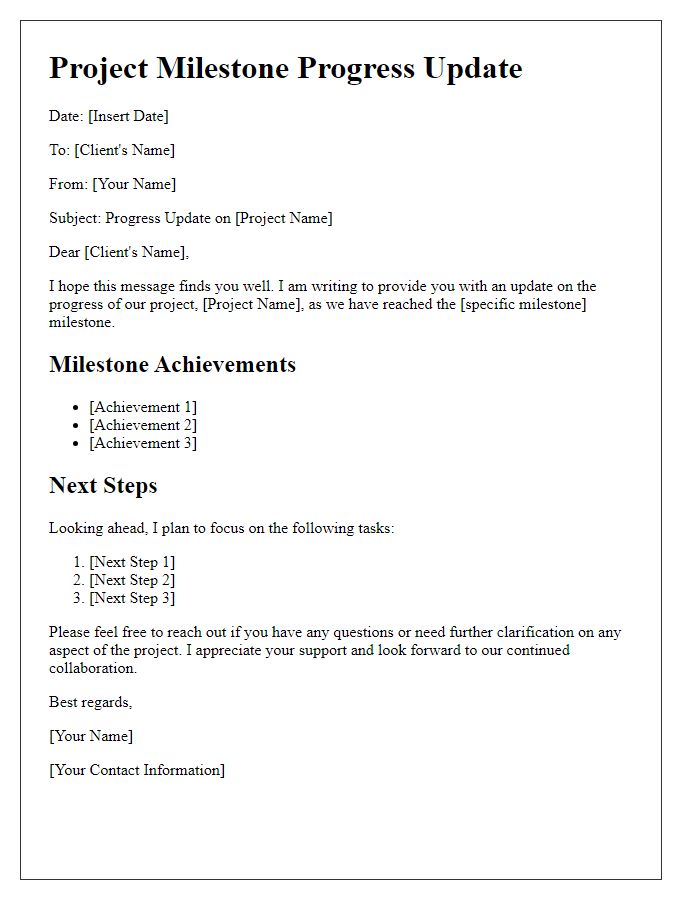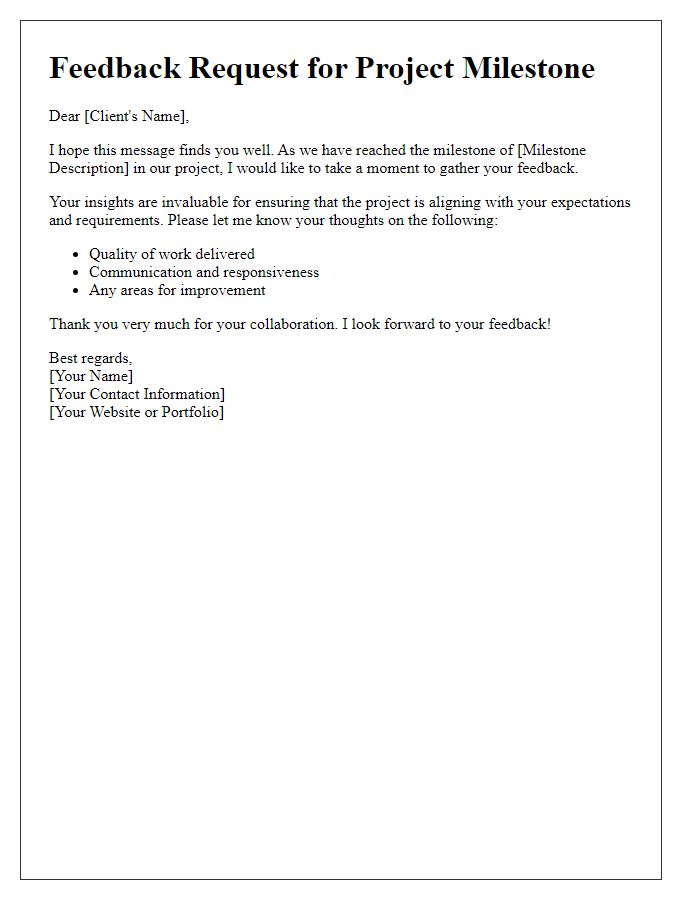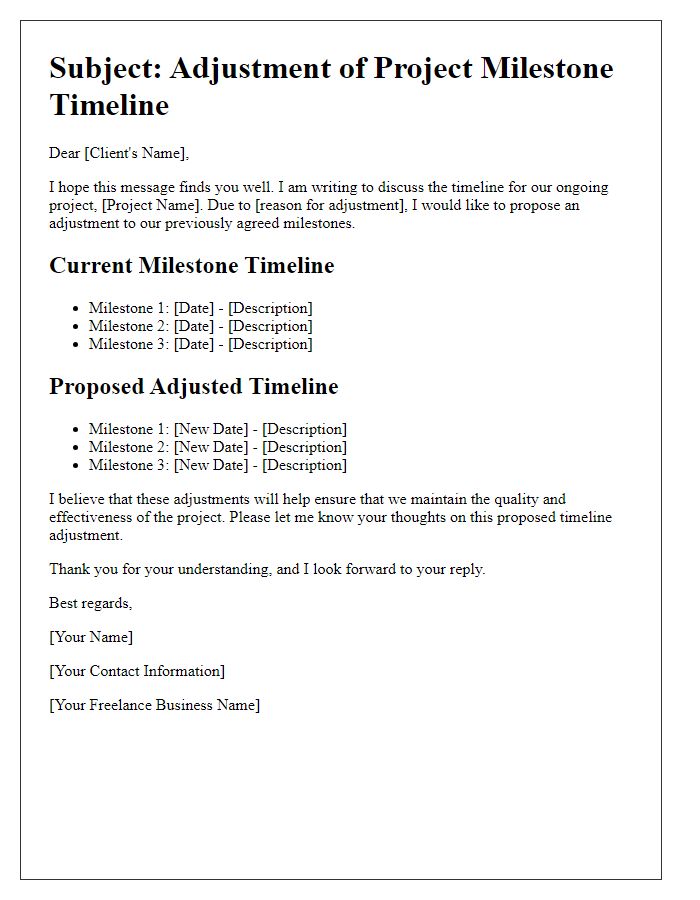Hey there! If you're navigating the exciting world of freelance projects, you're probably familiar with the importance of setting milestones to keep everything on track. Milestones serve as essential checkpoints, ensuring that both you and your client are aligned on goals, expectations, and timelines. They not only foster transparent communication but also help in celebrating achievements along the way. Curious to learn how to effectively craft a milestone letter for your projects? Keep reading to discover tips and templates that will elevate your freelance game!

Project Title and Milestone Description
Freelance projects often require clearly defined milestones to ensure progress and clarity. A well-structured milestone document should reference the specific project title, such as "E-commerce Website Development", and provide detailed descriptions of each milestone, which might include tasks like "Initial Wireframe Completion" or "Database Setup". Dates should be included, marking deadlines, such as "Milestone 1 due by October 30, 2023". Payment terms related to these milestones must also be outlined, specifying amounts tied to the successful completion of each phase. This structure promotes transparency and accountability between clients and freelancers.
Timeline and Completion Dates
Freelance projects often have specific milestones that dictate the timeline for completion. These milestones, such as initial drafts, feedback sessions, and final deliverables, typically vary in duration based on project complexity and client requirements. The timeline can span from days to months, depending on project scope. For instance, a graphic design project might allocate two weeks for the first draft, followed by a one-week feedback period from the client. Furthermore, clear completion dates are crucial, helping to manage expectations and ensuring timely delivery, particularly for clients in high-demand industries like entertainment or technology. Setting milestones not only aids in project workflow but also enhances communication and accountability between freelancers and clients.
Deliverables and Scope of Work
Freelance projects often include specific milestones to track progress and ensure satisfactory deliverables align with the predefined scope of work. Each milestone typically outlines key goals that must be met, such as the completion of design concepts, coding phases, or content creation. A detailed description of deliverables may involve tangible items like initial drafts, final reports, or prototypes, along with deadlines tied to project timelines. Communication expectations throughout the project also become essential, fostering collaboration through regular updates via emails or reports. Clear definitions help prevent scope creep, ensuring both the freelancer and client maintain alignment on core objectives throughout the project lifecycle.
Payment Terms and Schedule
Freelance project milestones typically include payment terms and schedules to ensure both parties are aligned on expectations. A common structure involves defining clear milestones, such as the completion of a project phase, with associated payment percentages based on the project's total cost. For instance, an initial deposit (usually 20-30%) is often required before starting work, followed by additional payments tied to key deliverables. Payment due dates may be aligned with milestones, such as within 15 days of milestone completion. Clear communication regarding payment methods, such as bank transfers or online platforms, is critical to ensure timely transactions and maintain a positive working relationship.
Communication and Feedback Process
Freelancers often navigate project milestones where effective communication and feedback processes play a crucial role in project success. Establishing clear communication channels fosters collaboration, ensuring all stakeholders remain aligned. Regular check-ins, such as weekly video calls or progress reports, facilitate timely updates and clarify expectations. Feedback loops, incorporating both qualitative and quantitative assessments, help refine project direction. Utilizing project management tools, like Trello or Asana, enhances transparency, allowing team members to track progress efficiently. Constructive criticism during these phases can significantly impact the quality of deliverables, ultimately leading to successful project outcomes. Note: The effectiveness of communication processes often hinges on defined structures, documented guidelines, and the use of collaborative tools, emphasizing the importance of having a clear protocol in place.
Letter Template For Freelance Project Milestone Samples
Letter template of freelance project milestone achievement acknowledgment













Comments